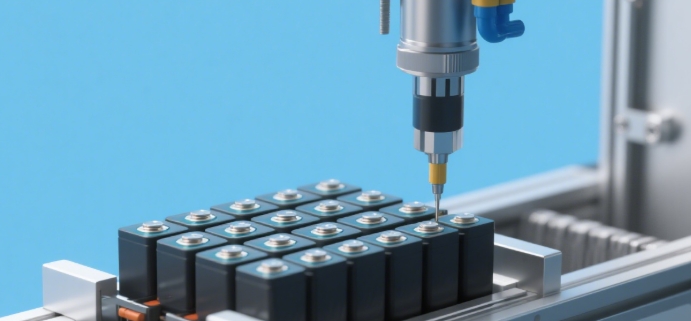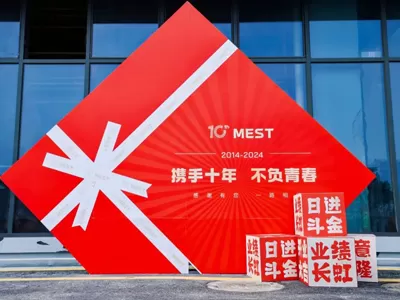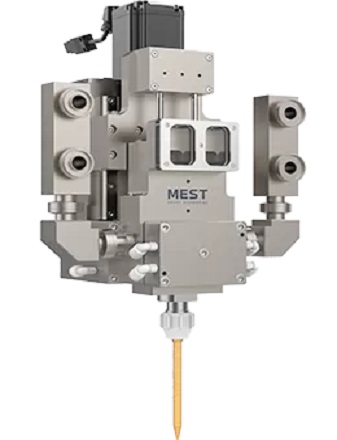
English
What are you looking for?
The shift to automated potting systems is revolutionizing the way manufacturers seal new energy battery packs. Traditional manual potting methods, though widely used, struggle to keep up with the industry’s demand for speed, precision, and consistency. By transitioning to fully automated potting machines, companies can drastically reduce cycle times while maintaining superior quality, all without compromising durability or performance.
Now, let’s break down how this efficiency leap is achieved and what makes automated potting technology indispensable in modern battery manufacturing.
Traditional potting machines, relying heavily on manual operation, introduce unavoidable inefficiencies in battery pack sealing. Not only do they require slow, step-by-step application, but human variability also leads to uneven material distribution. Without precise control, there is an increased risk of air pockets, weak adhesion, and even costly rework.
Moreover, as battery designs evolve, thicker glue layers and faster-curing materials further expose the limitations of older potting methods. While manual processes may suffice for low-volume projects, they simply cannot match the speed and repeatability of automated potting systems, especially in high-mix production environments.
Given the demand for reliable, high-speed encapsulation, upgrading to an automated solution isn’t just an improvement—it’s a necessity.
By integrating multi-axis robotic dispensing and closed-loop pressure control, automated potting systems achieve unprecedented sealing speeds. Not only does this eliminate manual delays, but precise volumetric dispensing ensures minimal material waste.
High-speed potting machines further optimize cycle times by pre-programming dispensing paths and adjusting flow rates in real time. There is no need for operator adjustments, nor do temperature or viscosity changes slow production. With self-calibrating systems, what once took hours now takes mere minutes—without sacrificing quality.
Automation not only accelerates the process but also reduces labor costs, making it a strategic investment for competitive battery manufacturers.

Stability in potting systems hinges on three core technologies: vacuum dispensing, dynamic pressure regulation, and real-time monitoring. Vacuum dispensing, for instance, prevents air entrapment by degassing materials before application, thus ensuring bubble-free encapsulation.
Equally critical are pressure-compensated pumps, which maintain consistent flow regardless of material viscosity. Should fluctuations occur, there is an immediate feedback loop to correct deviations before defects arise. By combining these systems with automated vision inspection, manufacturers guarantee defect-free output—even at high speeds.
Ultimately, reliability in automotive-grade battery sealing depends on such advanced controls, reinforcing why only automated potting machines meet industry standards.
Even micro-sized voids can compromise battery performance—yet, with automated potting systems, this is a non-issue. Using pressure-optimized nozzles and adaptive path planning, these machines eliminate air pockets before material cures. Only when a vacuum dispensing system removes trapped gases does the potting compound achieve flawless penetration.
There is no room for guesswork: through synchronized pressure and temperature control, high-precision potting machines adapt dynamically, ensuring complete cavity filling every time. Not only does this minimize rejects, but it also extends battery lifespan by preventing dendrite formation in gaps.
For EV battery makers, this precision isn’t optional—it’s a baseline requirement.
Unlike rigid, single-task machines, modular potting systems are built for flexibility. Whether sealing small 18650 cells or large solid-state battery packs, there is a configurable solution. By simply switching dispensing heads or adjusting software parameters, the same machine handles silicone, epoxy, or polyurethane—no retooling needed.
Not only does this reduce capital expenses, but it also future-proofs production lines against shifting market demands. For manufacturers dealing with diverse product mixes, modularity isn’t just convenient—it’s transformative.
The next generation of potting machines will leverage AI-driven predictive maintenance and IoT connectivity. Imagine systems that not only self-optimize dispensing paths but also forecast material usage and schedule replenishment—all without human input.
There is already momentum toward fully autonomous potting systems, where edge computing and machine learning drive zero-defect production. Soon, instead of operators overseeing machines, they’ll analyze performance dashboards—freeing teams for higher-value tasks.
For forward-thinking battery producers, early adoption of smart potting technology means securing a lasting competitive edge.


